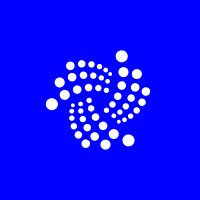I just realized most people have no idea how big this IOTA news actually is.
I’ve dealt with export paperwork before. It’s slow, messy, and full of errors.
𝘛𝘳𝘢𝘥𝘦 𝘪𝘴 𝘢 $33𝘛 𝘮𝘢𝘳𝘬𝘦𝘵, 𝘺𝘦𝘵 𝘪𝘵 𝘴𝘵𝘪𝘭𝘭 𝘳𝘶𝘯𝘴 𝘰𝘯 𝘴𝘵𝘢𝘮𝘱𝘴, 𝘴𝘪𝘨𝘯𝘢𝘵𝘶𝘳𝘦𝘴, 𝘢𝘯𝘥 𝘮𝘢𝘯𝘶𝘢𝘭 𝘤𝘩𝘦𝘤𝘬𝘴.
> Containers sit idle.
> Banks take hours (sometimes days) to verify exporters.
> Africa alone loses $25B a year in payment fees and pushes 4B paper documents every single day.
𝘚𝘰 𝘸𝘩𝘦𝘯 𝘐 𝘴𝘢𝘸 @afcfta 𝘭𝘢𝘶𝘯𝘤𝘩 𝘢 𝘥𝘪𝘨𝘪𝘵𝘢𝘭 𝘵𝘳𝘢𝘥𝘦 𝘴𝘺𝘴𝘵𝘦𝘮 𝘣𝘶𝘪𝘭𝘵 𝘦𝘯𝘵𝘪𝘳𝘦𝘭𝘺 𝘰𝘯 @iota, 𝘐 𝘬𝘯𝘦𝘸 𝘵𝘩𝘪𝘴 𝘸𝘢𝘴 𝘥𝘪𝘧𝘧𝘦𝘳𝘦𝘯𝘵.
This isn’t a pilot on a testnet.
This is real adoption:
> Kenya cut trade document validation from 6–7 hours → 30 minutes
> 60–70% of manual work eliminated
> Rwanda is reporting the same results
𝘈 𝘸𝘩𝘰𝘭𝘦 𝘤𝘰𝘯𝘵𝘪𝘯𝘦𝘯𝘵 𝘪𝘴 𝘮𝘰𝘷𝘪𝘯𝘨 𝘪𝘵𝘴 𝘵𝘳𝘢𝘥𝘦 𝘳𝘢𝘪𝘭𝘴 𝘰𝘯𝘵𝘰 𝘰𝘱𝘦𝘯, 𝘥𝘦𝘤𝘦𝘯𝘵𝘳𝘢𝘭𝘪𝘻𝘦𝘥 𝘪𝘯𝘧𝘳𝘢𝘴𝘵𝘳𝘶𝘤𝘵𝘶𝘳𝘦 𝘢𝘯𝘥 𝘐𝘖𝘛𝘈 𝘪𝘴 𝘵𝘩𝘦 𝘣𝘢𝘤𝘬𝘣𝘰𝘯𝘦 𝘱𝘰𝘸𝘦𝘳𝘪𝘯𝘨 𝘪𝘵.
If this scales across 54 nations, it unlocks:
➢ $70B in new trade value
➢ $23.6B in yearly efficiency gains
➢ Instant, cheap digital payments + stablecoins
Everything burns fees or locks tokens.
Meaning every trade flow = real IOTA usage.
IOTA isn’t “coming back.”
It’s finally being deployed at government scale, something crypto has been promising for a decade.
And honestly?
Most of CT is sleeping on it.
6,873
75
本页面内容由第三方提供。除非另有说明,欧易不是所引用文章的作者,也不对此类材料主张任何版权。该内容仅供参考,并不代表欧易观点,不作为任何形式的认可,也不应被视为投资建议或购买或出售数字资产的招揽。在使用生成式人工智能提供摘要或其他信息的情况下,此类人工智能生成的内容可能不准确或不一致。请阅读链接文章,了解更多详情和信息。欧易不对第三方网站上的内容负责。包含稳定币、NFTs 等在内的数字资产涉及较高程度的风险,其价值可能会产生较大波动。请根据自身财务状况,仔细考虑交易或持有数字资产是否适合您。


